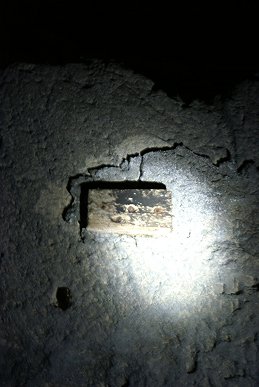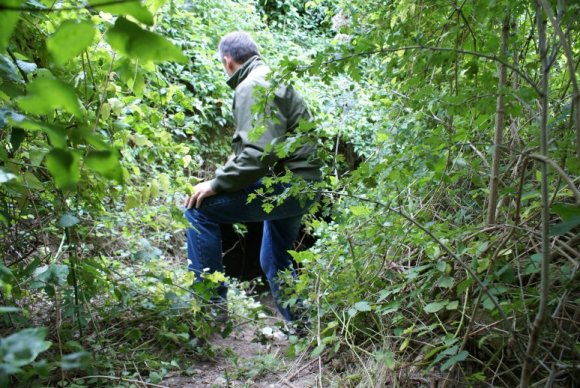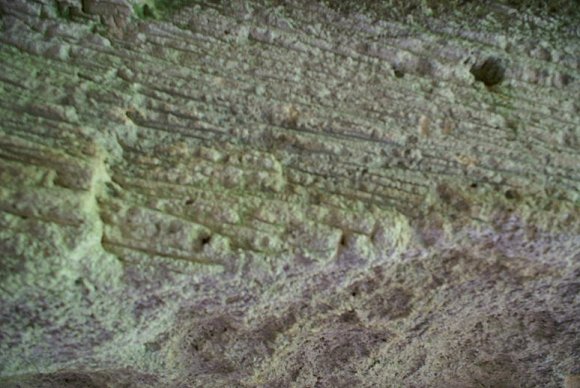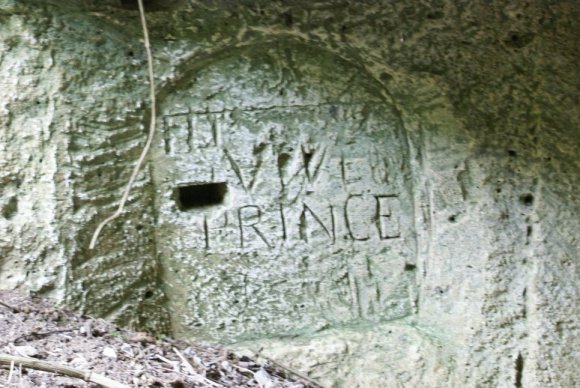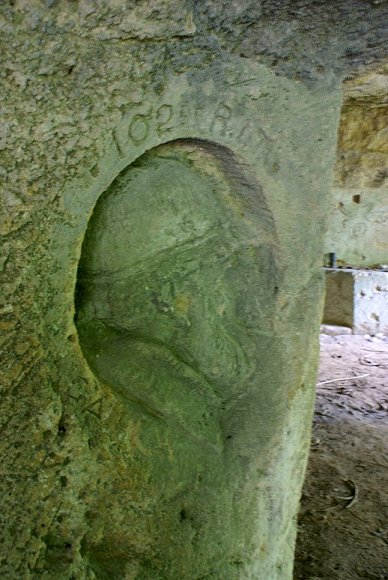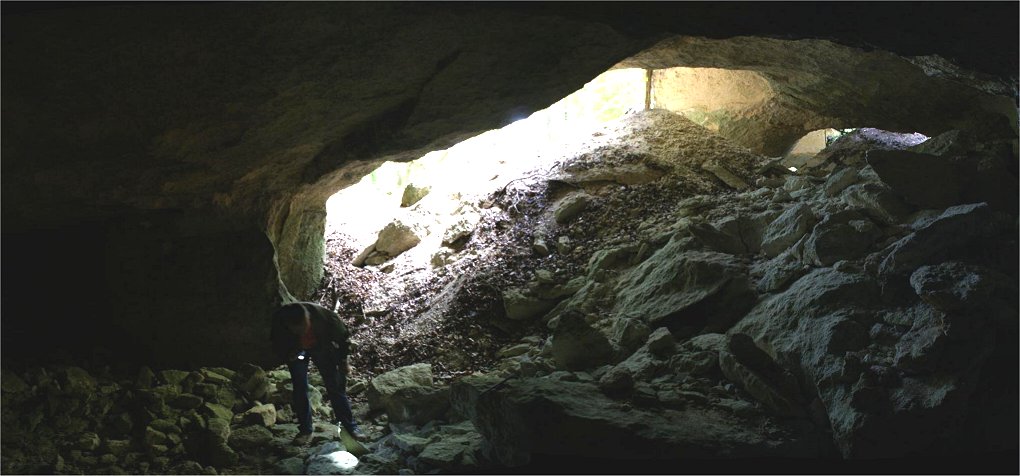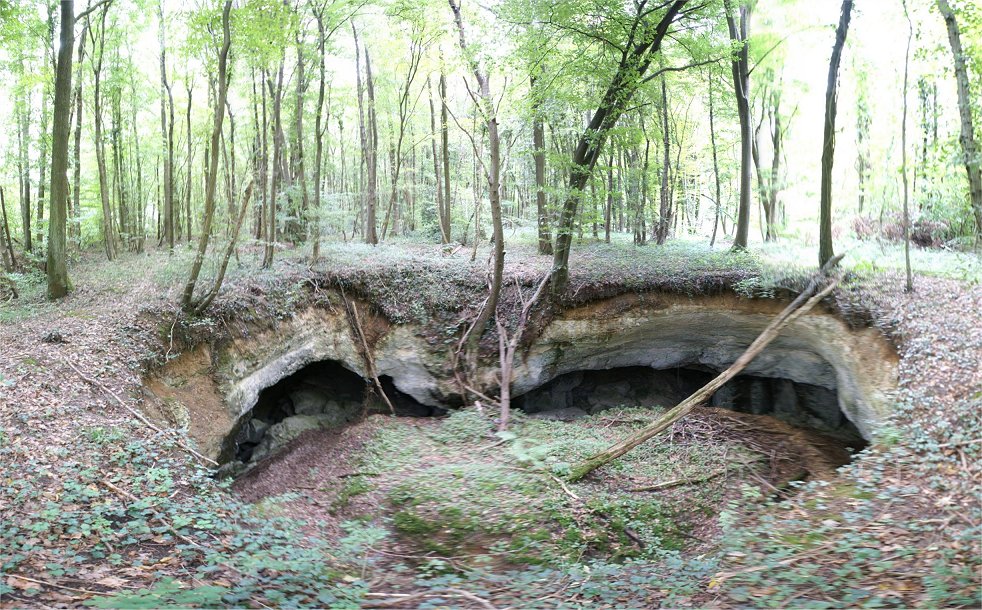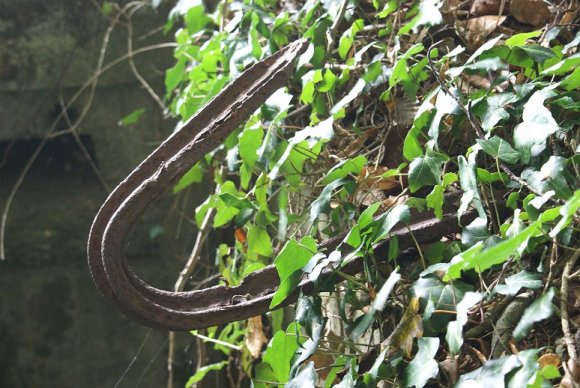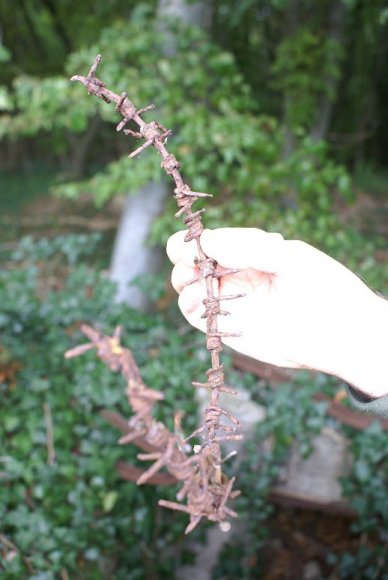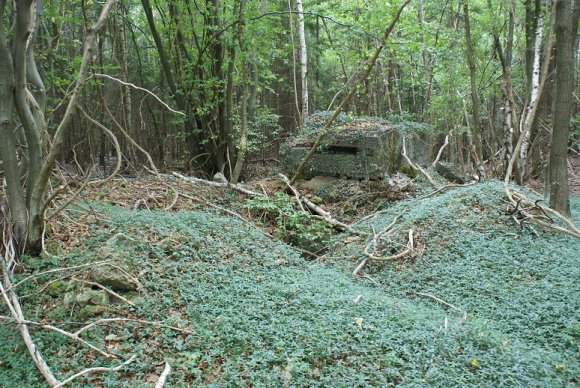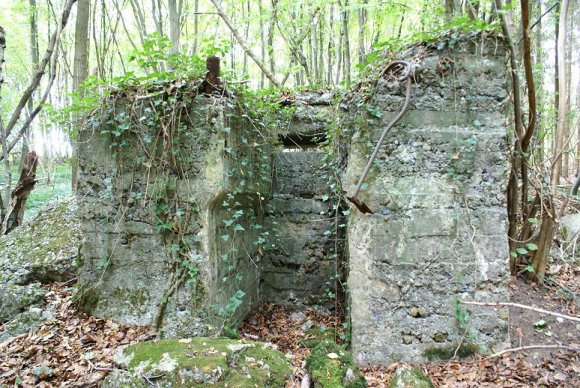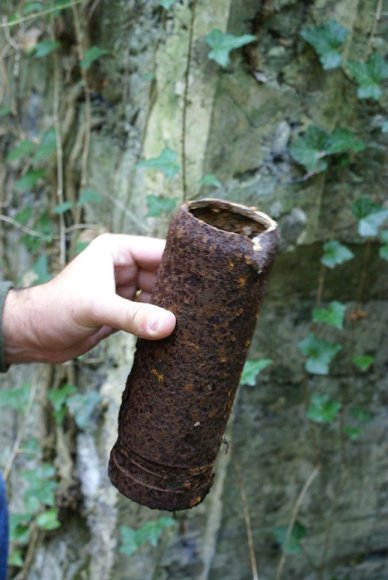In the panorama above, the French frontline was in the
plowed field parallel to this farm lane. The large depression
in
the center of the panorama is the location of a dugout - an infantry
shelter. Further to the right in the distance there is
another
depression where there was a dugout.
The photo at right shows a stairway descending into a dugout.
It
looks dangerous to enter, so we continue elsewhere. Each
dugout
would have two entrances seperated by a great enough distance that one
artillery projectile could not destroy them both. After the
war
many of the entrances were dynamited to close them off, but some can
still be accessed.
The area here is solid rock, but elsewhere the French
would build
dugout with layers and layers of logs, packed earth and iron sheeting.
In some quiet areas, electrical alarms were even used. |
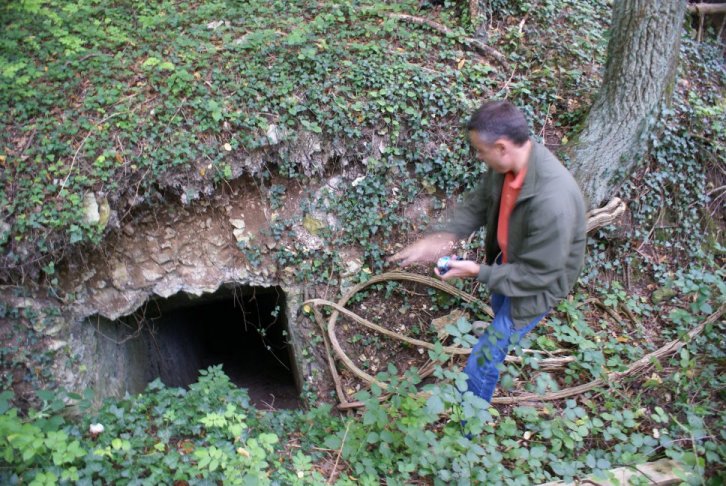 |
